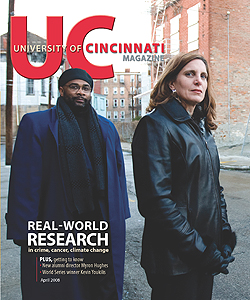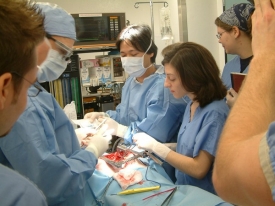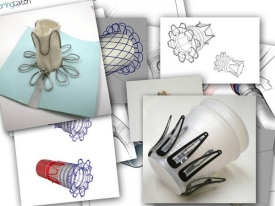Innovative students engineer for the operating room
by Amanda Hughes
The next time you go under the knife, consider that amateurs might have designed the tools in your surgeon's hands. Not a very comforting thought, until you meet the students and faculty involved in the medical device innovation and entrepreneurship program within UC's College of Engineering.
There, student teams work with physicians and medical-device manufacturers to design mechanical solutions for surgery and other clinical procedures, with an emphasis on immediate impact. "We're all about solving real problems that physicians have now," says Mary Beth Privitera, assistant professor of biomedical engineering and program co-founder.
"We take on problems with attainable solutions, rather than a large research project that would take multiple years." The idea is to produce new devices that help doctors do their jobs or improve upon existing tools and instruments.
Her students, for instance, are now working with Radlyn Inc. on a device that would help emergency responders better open an airway for patients who are struggling to breathe. Radlyn, Privitera and the students are currently reviewing contract manufacturers and hope to have a product on the market this year.
Before coming to teach at UC, Privitera, DAAP '95, spent 17 years in the field designing and consulting for medical-device companies and was regularly involved in product releases. Holding a master's degree in industrial design, Privitera received a rare appointment (as a non-PhD and DAAP alumna) within the College of Engineering in 2004 to lead the device design program.
Her appointment reflects the vital nature of the program's multidisciplinary focus. Faculty and students come from a variety of academic areas, including engineering, industrial design, medicine and business.
The veteran designer also doesn't draw a line between her teaching and her research. "I don't separate them," she says. That approach leads to the real-world nature of the projects.
Balakrishna Haridas, Eng '01, associate professor of biomedical engineering, works closely with Privitera in orchestrating the program and also spent 16 years in the medical-device industry before coming to UC. He stresses the importance of the design program to physicians, pointing out, "The conversion of our research into new medical devices will dramatically improve patient care at lower cost to our health-care system."

 Issue Archive
Issue Archive
